This week, a show titled Sangeet Bari will offer unique insights into the world of traditional Lavani theatres and the lives of the dancers who earn their livelihood from them
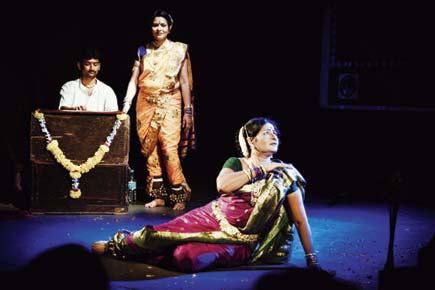
Lavani, the traditional dance form of Maharashtra, has a history that dates back several centuries. While it remains popular, few are aware of its varied nuances.
ADVERTISEMENT
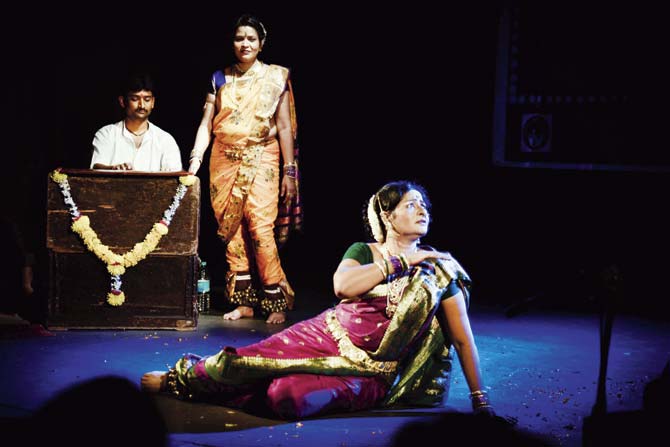
Shrikant Pacharne, Pushpa Satarkar, and Shakuntalabai Nagarkar on stage. Pic courtesy./Kunal Vijayakar
With an intent to focus on the rich heritage of Lavani, Bhushan Korgaonkar and director Savitri Medhatul decided to stage Sangeet Bari. The show highlights the traditional Lavani theatres where dance troupes performed turn by turn (hence, the term ‘bari’).
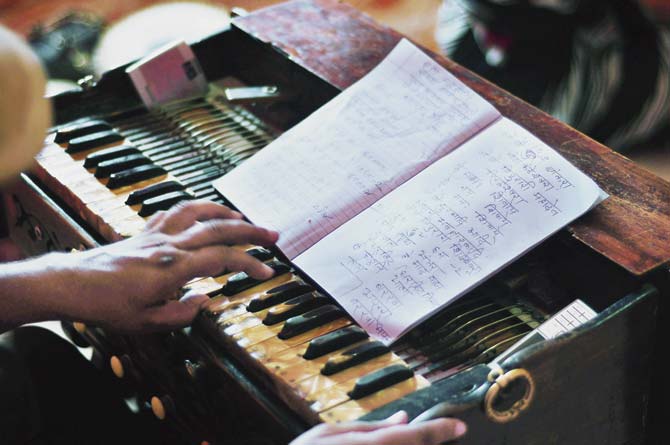
The process of composing a new Lavani. Pic courtesy/Kunal Vijayakar
Sangeet, and more
Korgaonkar and Medhatul were introduced to the world of Lavani dancers while working on the documentary, Natale Tumchya Saathi: Behind The Adorned Veil (2008). Later, they worked on the Marathi title, Sangeet Bari (2014). The book and the film focussed on the lives of Lavani dancers and portrayed them as artistes and human beings, unlike the popular image of the dancers as seductresses or victims.
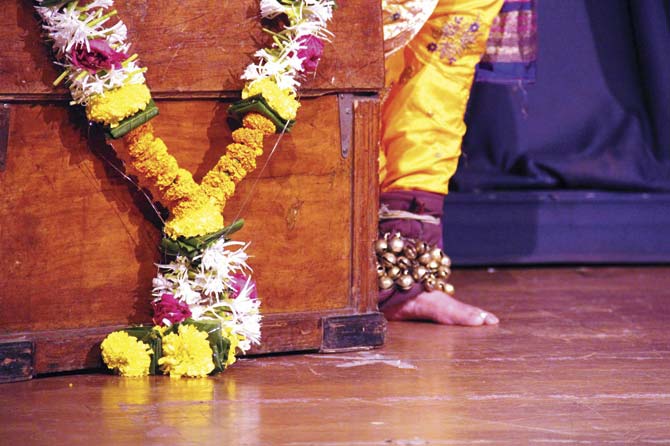
Their latest show, Sangeet Bari, combines narratives of the Lavani dancer, the musicians, the customer and the researcher involved in the process. It includes performances on compositions which are unknown or forgotten.
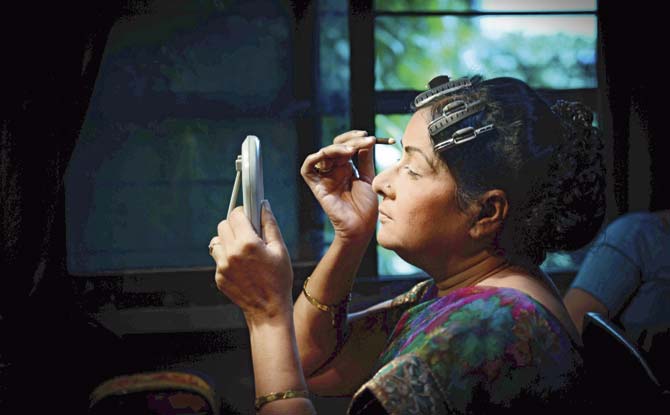
Sangeet Natak Academy award winner Shakuntalabai Nagarkar, getting ready for a show. Pic courtesy/Kunal Vijayakar
Speaking about the show, Bhushan Korgaonkar shares, “While there is awareness about Lavani, it is restricted to one type of Lavani, which is akin to an item number. It features a main dancer, chorus dancers, and lots of musical instruments.
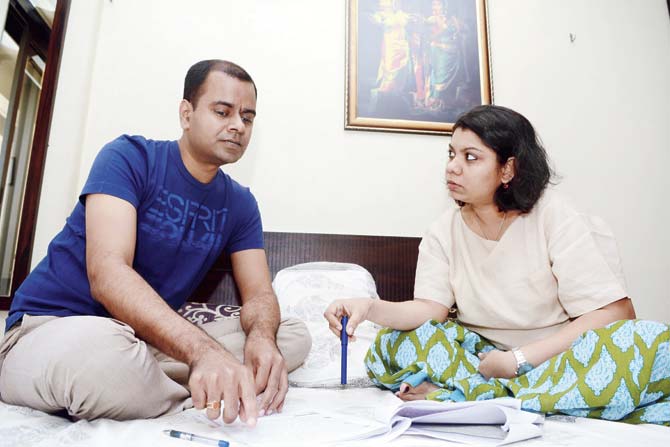
Bhushan Korgaonkar and Savitri Medhatul
But Lavani has much more untapped potential.” He adds that Sangeet Bari will feature Lavani performed to the tune of traditional instruments (harmonium, tabla, dholki) that were used 50 years ago and are in use even today.
Lavani lore
“Our dancers will wear metallic Lavani ghungroos (unlike the Kathak or Bharatanatyam-style ghungroos worn by dancers on television). Most will sing their own songs. It’s a holistic experience,” he explains. “Sangeet Bari marks a culmination of our experiences among Lavani dancers.
It also showcases rare compositions; the content of the songs was often considered taboo, since it spoke about female sexuality and the poetry was often explicit,” states Medhatul. Next up, the duo hope to take the show to other venues and to create an audio-visual archive documenting the dancers’ experiences.
Did you know?
>> Most of the women who start dancing in Sangeet Bari belong to nomadic tribes such as Bhatu Kolhati, Dombari and Kalwaat. Womenfolk from these communities have been performing Lavani for centuries.
>> Girls are initiated in the profession at a young age (12-15 years). The initiation is conducted by tying of the ghungroo; after this, they are not allowed to get married. They are expected to be under the patronage of a man whom they call Malak (owner).
>> Sangeet Bari theatres are still prevalent in the state, although not in Mumbai. There are over 45 theatres across Pune, Solapur, Satara, Sangli, Kolhapur, Ahmednagar and Marathwada. They have maintained the traditions but the quality is deteriorating.
>> There are 8-10 dance troupes attached to each theatre. Each troupe (known as sangeet party) has 1-2 malkins (lady owners) by whose name it is known.
>> A customer can watch daily stage shows at nominal ticket rates, where these parties perform turn by turn or can request for a private performance for a higher price ('3,000 to '5,000
per hour).
>> Being an intimate set-up, the girls can interact and communicate with the audience though their performance. It’s how ‘Baithakichi Lavani’ (Lavani done in a Baithak or seated) emerged. Emphasis is on the facial expression, singing, interacting and giving a personalised experience.
>> Traditional Lavani needs a patient audience, who are interested in fine work, smart words, subtle gestures, play of emotions, etc.
On: April 30, 9 pm
At: Prabodhankar Thackeray Mini Theatre, Borivali (W).
On: May 1, 7.30 pm at PL Deshpande Mini Theatre, Ravindra Natya Mandir, Prabhadevi.
Cost: 250; 200
 Subscribe today by clicking the link and stay updated with the latest news!" Click here!
Subscribe today by clicking the link and stay updated with the latest news!" Click here!






